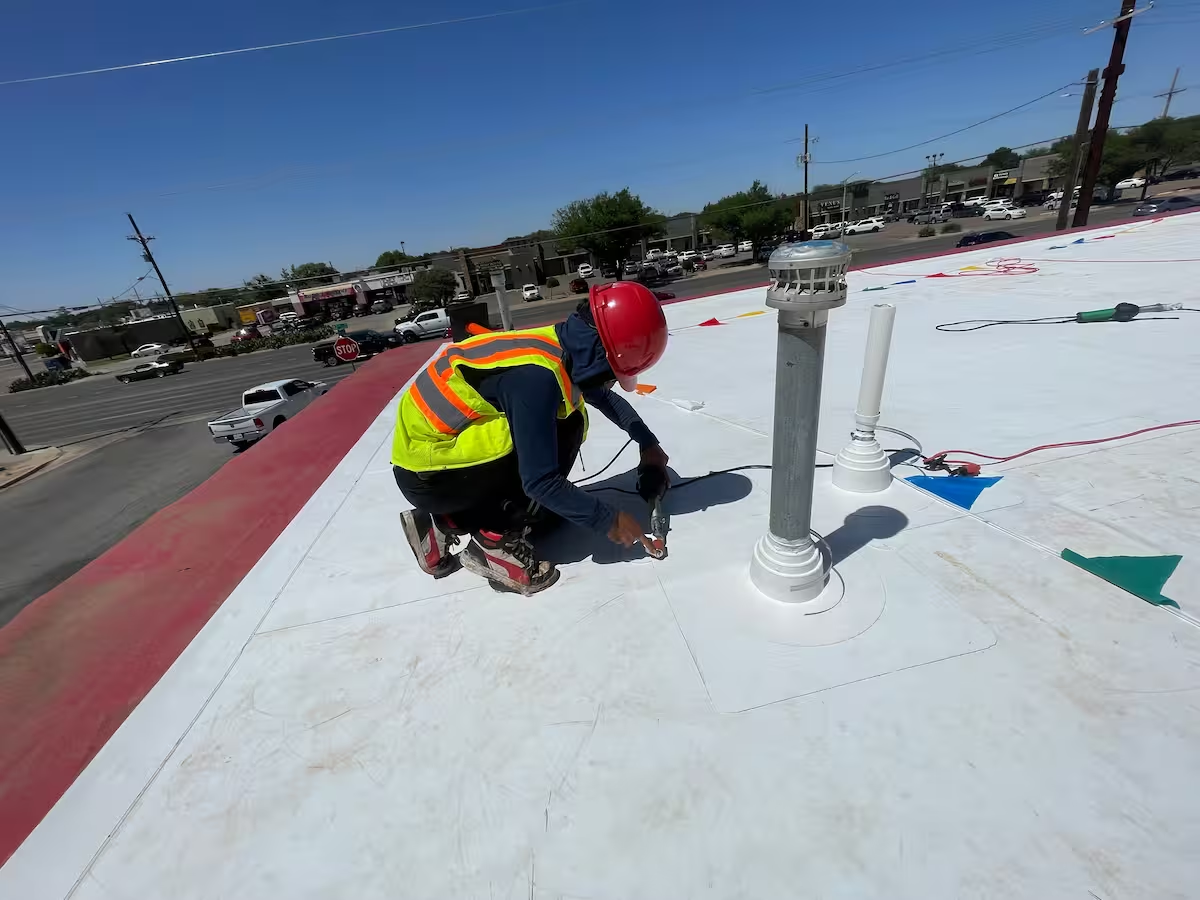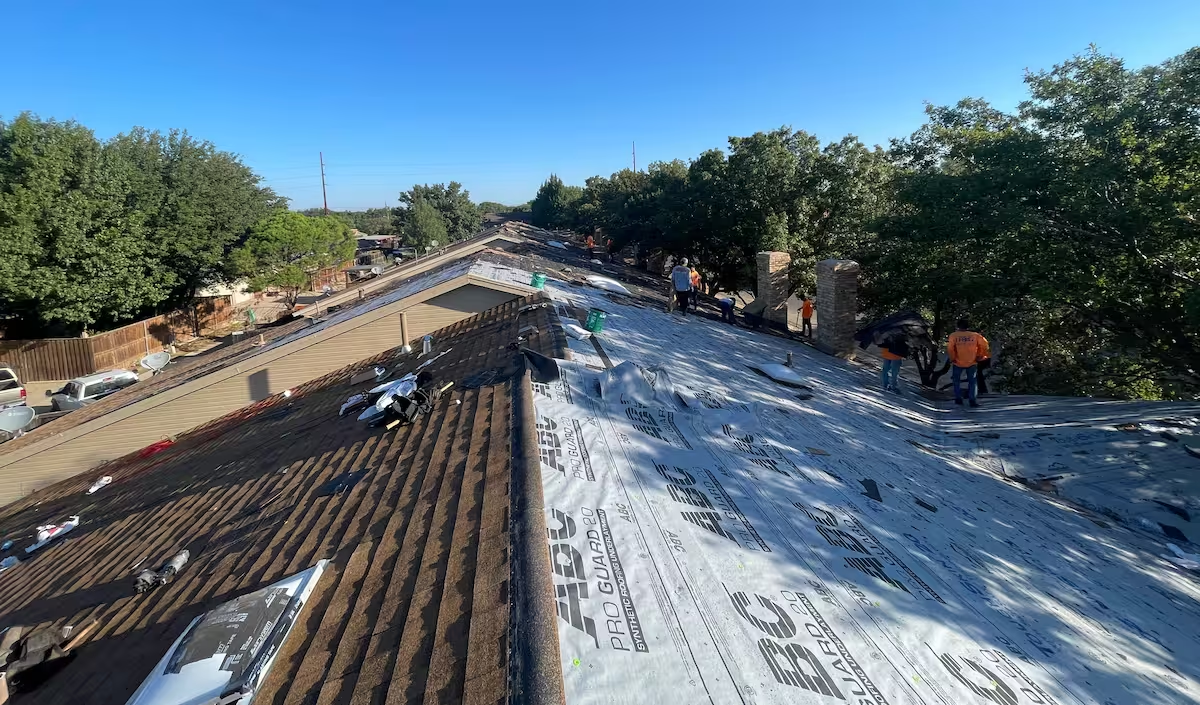Strategic Timing for Roof Repairs
Choosing the right time for roof repairs can significantly impact project quality, cost, and contractor availability. Strategic timing can save 10-30% on repair costs while ensuring optimal weather conditions for quality workmanship and long-lasting results.
Understanding seasonal advantages and challenges helps property owners make informed decisions about when to schedule repairs, whether addressing emergency damage or planning preventive maintenance projects.
Spring: The Prime Repair Season
Spring emerges as the most popular time for roof repairs, offering ideal conditions after winter's end and before summer's extreme heat. Mild temperatures and moderate weather patterns create optimal working conditions for contractors while allowing materials to cure properly.
Spring Advantages
- Moderate temperatures ideal for material installation and worker safety
- Assessment of winter storm damage before conditions worsen
- Preparation for summer heat and potential severe weather
- Extended daylight hours for longer working days
Spring Considerations
High demand during spring can lead to longer scheduling delays and premium pricing. Book spring repairs early to secure preferred contractors and avoid peak-season pricing. Frequent spring rains may cause weather-related delays, extending project timelines.
Summer: Heat Challenges and Opportunities
Summer offers consistent weather patterns but presents unique challenges for roof repair projects. Extreme heat can affect material performance and worker productivity, though longer days and stable weather provide extended working windows.
- Consistent weather patterns reduce weather-related delays
- Maximum daylight hours allow for efficient project completion
- High temperatures may affect shingle installation and sealant curing
- Peak demand maintains higher pricing and limited availability
Summer Best Practices
Schedule summer work for early morning hours to avoid peak heat. Ensure contractors have proper safety protocols for hot weather work and consider impact-resistant materials that perform better in extreme temperatures.
Fall: The Strategic Sweet Spot
Fall represents an excellent balance of favorable conditions and competitive pricing. Cooler temperatures and reduced demand create opportunities for cost savings while ensuring quality installation before winter weather arrives.
Fall Benefits
- Moderate temperatures ideal for materials and worker comfort
- Reduced demand leads to better pricing and contractor availability
- Essential preparation for harsh winter weather conditions
- Stable weather patterns with fewer severe storms
Fall Timing Considerations
Complete fall repairs early enough to allow proper curing before freezing temperatures. Plan fall projects for September through early November depending on your regional climate patterns.
Winter: Emergency Repairs and Planning
Winter typically represents the least ideal time for major roof repairs due to weather challenges and safety concerns. However, emergency repairs cannot wait for optimal seasons, and winter offers opportunities for planning and preparation.
Winter Challenges
- Cold temperatures affect material flexibility and installation quality
- Snow and ice create dangerous working conditions
- Shortened daylight hours limit productive working time
- Emergency pricing premiums for urgent repairs
Winter Opportunities
Use winter months for planning spring projects, obtaining estimates, and scheduling preferred contractors. Winter planning ensures priority scheduling when optimal weather returns.
"The best time for roof repairs is before you need them. Proactive scheduling during optimal seasons prevents emergency repairs during challenging weather conditions."
Regional Climate Considerations
Optimal repair timing varies significantly by geographic region and local climate patterns. Understanding your area's weather patterns helps determine the best windows for repair work and material performance.
Hot Climate Regions
Areas with intense summer heat benefit from spring and fall scheduling to avoid extreme temperatures that can affect material installation and worker safety. Consider early morning or late afternoon scheduling during warmer months.
Cold Climate Areas
Regions with harsh winters should prioritize spring through fall repairs, with emergency provisions for winter damage. Snow load considerations may require immediate attention regardless of season.
Moderate Climate Zones
Areas with mild seasonal variations offer more flexibility in repair timing, though spring and fall typically provide optimal conditions and competitive pricing.
Emergency vs. Planned Repairs
Emergency Repair Timing
Storm damage, sudden leaks, or structural issues require immediate attention regardless of season. Emergency repairs prevent further damage and protect property until comprehensive repairs can be completed under optimal conditions.
Planned Maintenance Scheduling
Preventive repairs and maintenance projects benefit from strategic timing during off-peak seasons. Planned repairs typically cost 20-40% less than emergency work while ensuring quality installation conditions.
Contractor Availability and Pricing
Peak Season Challenges
Spring and early summer represent peak demand periods with limited contractor availability and premium pricing. Book preferred contractors months in advance during peak seasons to ensure availability.
Off-Season Advantages
Late fall and winter offer opportunities for better pricing and contractor attention. Quality contractors often provide discounts during slower periods while maintaining high service standards.
- Competitive pricing during off-peak periods
- More contractor attention and flexibility
- Opportunity to secure preferred scheduling for following season
- Time for thorough planning and material selection
Material Performance Considerations
Different roofing materials perform optimally under specific temperature and humidity conditions. Proper installation timing ensures maximum material performance and longevity.
Temperature-Sensitive Materials
- Asphalt shingles install best in moderate temperatures (45-85°F)
- Metal roofing can be installed year-round with proper techniques
- Modified bitumen requires warm temperatures for proper adhesion
- Tile and slate work best in stable, moderate conditions
Planning Your Repair Timeline
Annual Inspection Schedule
Schedule comprehensive roof inspections twice yearly to identify repair needs early. Spring and fall inspections allow for strategic repair planning during optimal seasons.
Project Planning Steps
- Conduct thorough roof assessment to identify all needed repairs
- Obtain multiple contractor estimates during off-peak periods
- Schedule non-emergency repairs for optimal weather windows
- Plan material procurement and delivery timing
Insurance and Weather Considerations
Insurance claims and weather-related damage often dictate repair timing regardless of optimal seasons. Understanding insurance timelines helps coordinate repairs efficiently while maximizing coverage benefits.
Storm Season Preparation
Complete preventive repairs before regional storm seasons to minimize damage risk. Hurricane, tornado, and severe weather preparation should occur well before peak storm periods.
Budget and Financial Planning
Strategic timing can significantly impact repair costs through seasonal pricing variations and contractor availability. Off-season scheduling can reduce costs by 15-25% while ensuring quality workmanship.
Financing Considerations
- Plan major repairs during periods of optimal cash flow
- Consider seasonal financing options and promotions
- Budget for potential emergency repairs during harsh weather periods
- Factor in energy savings from timely efficiency upgrades
Conclusion
The best time for roof repairs depends on balancing weather conditions, contractor availability, pricing, and specific project requirements. Spring and fall typically offer optimal conditions for most repair projects, while summer provides extended working hours despite heat challenges. Winter should be reserved for emergency repairs and planning future projects. Strategic timing can save significant costs while ensuring quality installation and long-lasting results. Consider your regional climate, project urgency, and budget constraints when planning repair timing. Proactive scheduling during optimal seasons prevents emergency repairs during challenging conditions while maximizing your investment in roof protection and performance.
.png)



